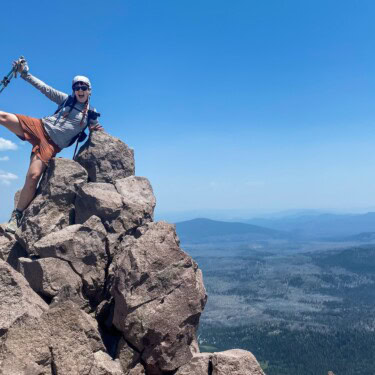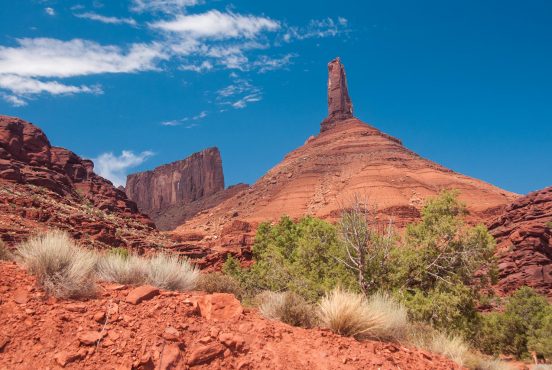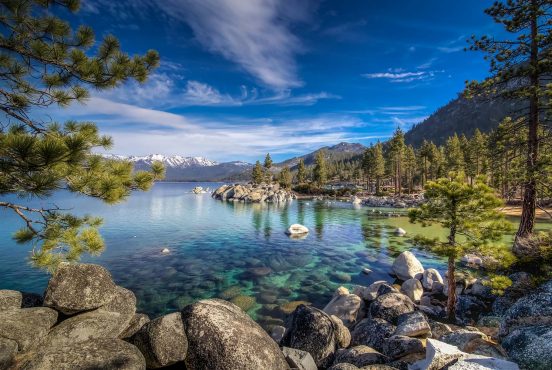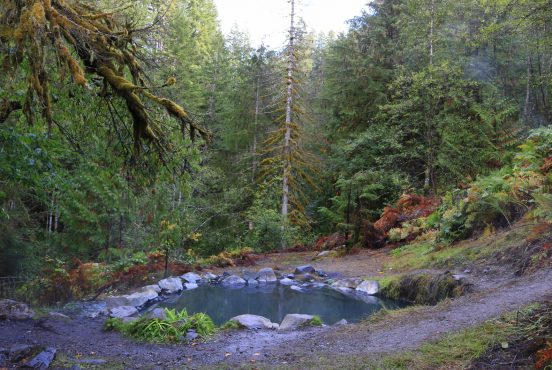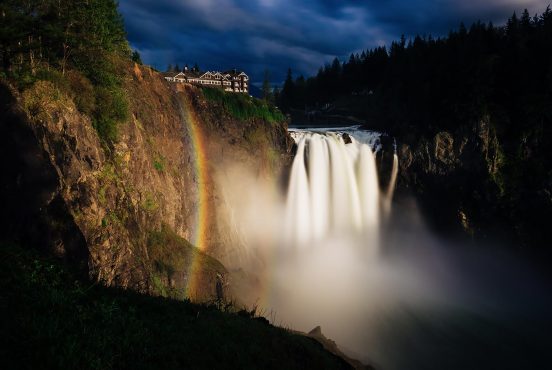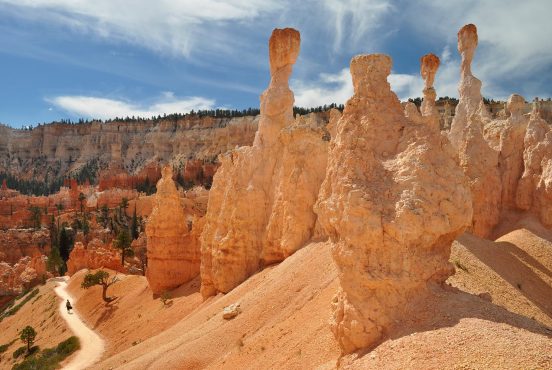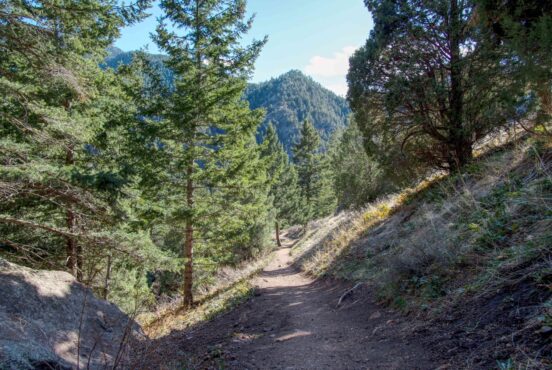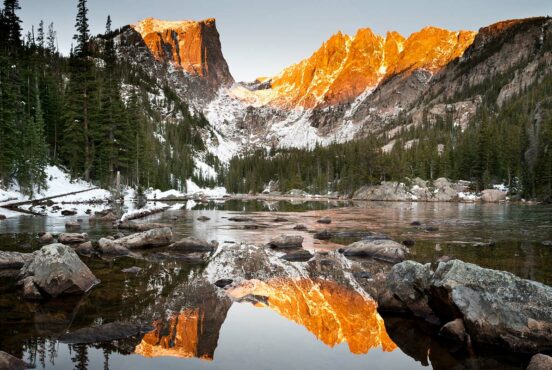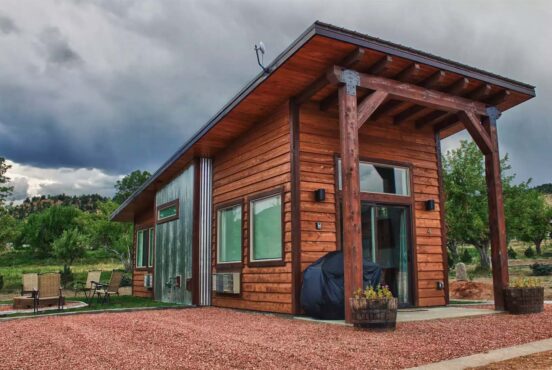Descend more than 7,000 feet as you tackle one of the world’s greatest mountain biking trails.
Utah’s Moab is a mecca for outdoor adventure, so it’s no surprise that it’s the home to one of the greatest mountain biking trails out there. The Whole Enchilada (WE) is more than just a trail — it’s a mountain biking odyssey.
Unlike places like Bentonville that are relative newcomers to the mountain biking scene, Moab has been the beating heard of mountain biking for decades. Revered by riders around the country, it’s a comprehensive singletrack experience that combines multiple trails to showcase the best of Moab’s legendary landscape as it descends through multiple ecosystems over the course of 27 miles. While the ride is a formidable endeavor for any biker, it’s well within reach for experienced weekend riders.
Want to take a bite of the Whole Enchilada? Here’s everything you need to know before heading to the desert.
Who Can Ride The Whole Enchilada
The beauty of the WE is that it’s a mixed-terrain trail, renowned for its diversity. It combines high-alpine singletrack, loose rock, fast descents and technical climbing, making it a true test of any rider’s skills.
But, there’s a caveat: it is not all downhill! The Whole Enchilada is known as a downhill-oriented shuttle ride but the truth is that there’s a lot of pedaling involved. If you want to take on the Enchilada, you should be ready to put in some serious effort. Terrain aside, the length of this ride presents a real endurance challenge, as well as the opportunity for technical issues galore.
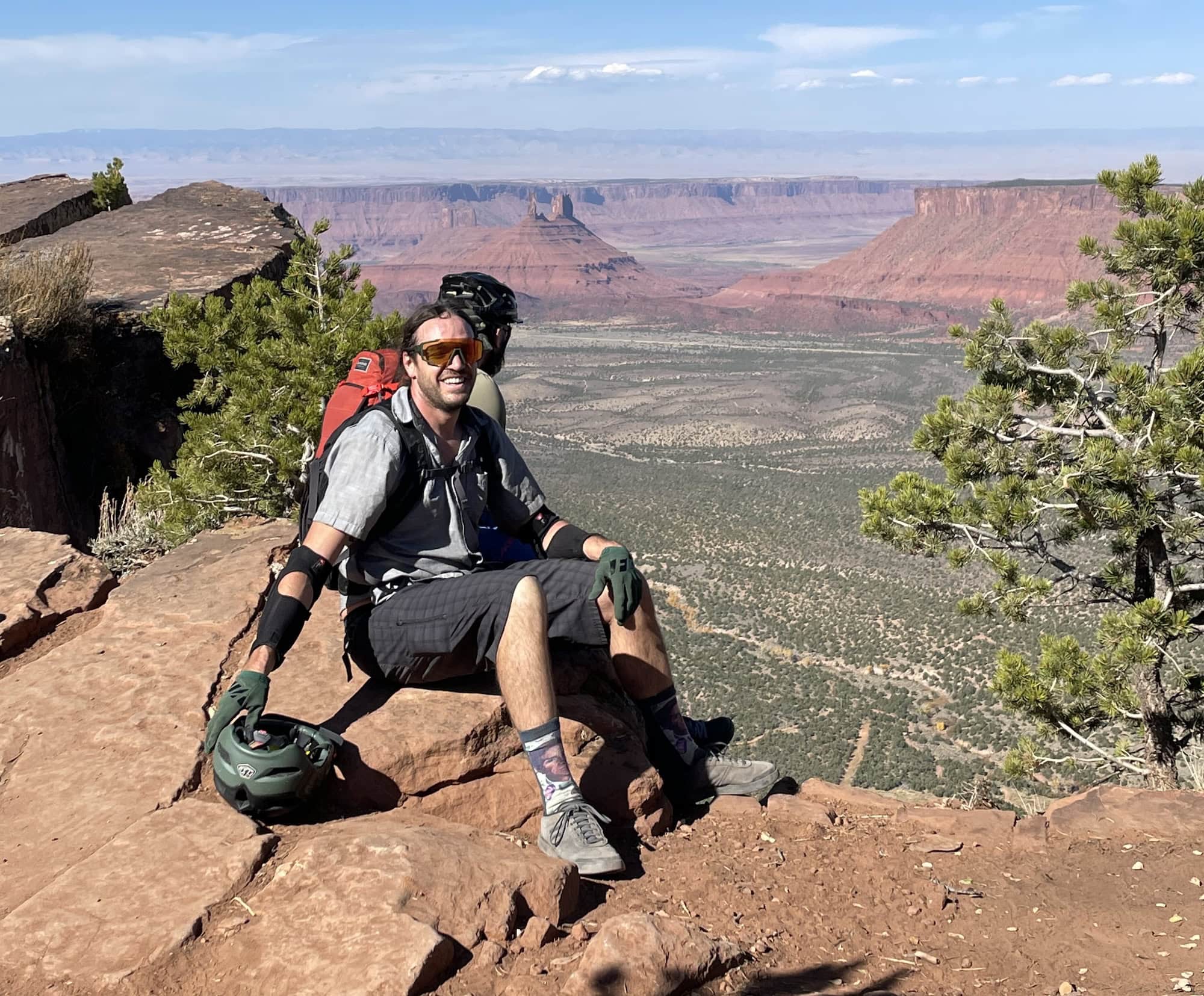
Timing is Everything
The trail starts high up in the La Sal mountains, reaching just over 11,000 feet at its pinnacle. This makes weather your number one factor when planning the trip. Lower parts of the trail can be ridden year-round but snow will shut down the top sections during the winter months.
The top segment, Burro Pass, typically opens at the beginning of July — if the snow has melted off. But, riders should be aware that the lower trails sections can subject bikers to temperatures in excess of 100 degrees Fahrenheit during July and August. This makes fall the prime time to ride the WE, as with most trails in Moab.
The trick is to watch the weather patterns to see when temperatures start cooling off but the La Sals are not yet getting snow. This is sometimes easier said than done as the transition happens quickly. Thankfully, local Moa bike shops like Poison Spyder and Whole Enchilada Shuttles post the up-to-date trail status for each section.
If you plan your trips well in advance, you might get skunked on Burro Pass a few times so your best bet is to keep your travel window flexible. With a bit of luck, you’ll eventually get to the top of Burro (or you might just get it the first try). I’ve been skunked before but on my most recent trip, we planned it 6 months in advance and just happened to get the perfect weekend in October!
How to Ride The Whole Enchilada: Trail Segments
Burro Pass
The ride starts at just under 11,000 feet, with a mellow meander through some meadows that quickly turns into a relatively-short but lung-busting climb to the top of Burro Pass. Most riders can make it to the top in 45-60 minutes.
Once there, take some time to catch your breath and have a snack before dropping in. The descent from Burro Pass is steep, technical and fun as hell. As you pick up speed, keep an eye out for tight switchbacks that come up quickly, as well as snowy or icy patches if you’re on the trail early or late in the year. As you get lower in this section, the singletrack will snake its way through beautiful groves of Aspen trees that light up in the fall.
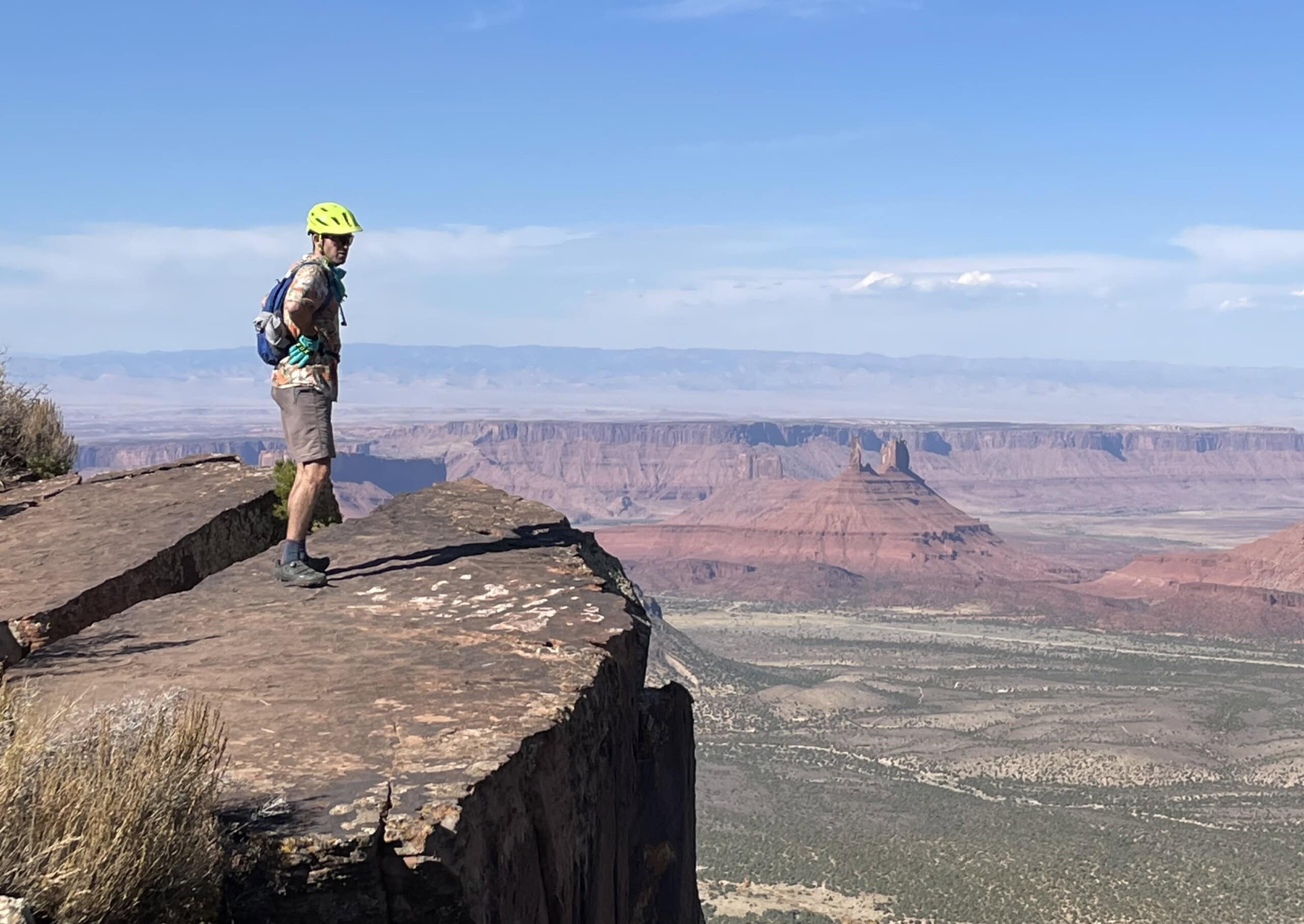
Hazard County
This section starts with a short, 10-minute climb as you transition into drier terrain. From the top of the climb you’ll get an expansive view of the desert landscape and the town of Moab below. Dropping in, you’ll find smoother riding and flowy singletrack — a nice respite after the technicality of Burro Pass.
Kokopelli Trail
Kokopelli is a short and fast section that marks the middle of The Enchilada. Rip down this double track and then pedal for just a few minutes to get you to the next segment.
Upper Porcupine Singletrack UPS and Lower Porcupine Singletrack LPS
These will introduce more technical challenges with undulating, rocky terrain to navigate. The trail becomes more exposed as it winds its way along the cliffs overlooking Castle Valley, offering breathtaking views and a few perfect places to stop for lunch. There are numerous short and steep climbs, along with obstacles that will test your mettle and endurance as you start to really grasp that this is not a downhill-only trail. These features are complemented by fast and fun stints with a plethora of little drops and ledges for riders who like to log some air time.
Porcupine Rim
Hopefully you’ve saved a little gas in the tank for this final stretch, which is famous for its rugged terrain and cliffside riding. You’ll drop into a fast and flowy section that soon slows down as you navigate your way up and around boulders. As the trail winds its way around the final corner, you can take in stunning views of the Colorado River below. Don’t take your eyes off the dirt ribbon for too long though, as you’ll need to focus your energy to get through a few technical rock gardens and ledges before popping out at the trailhead below.
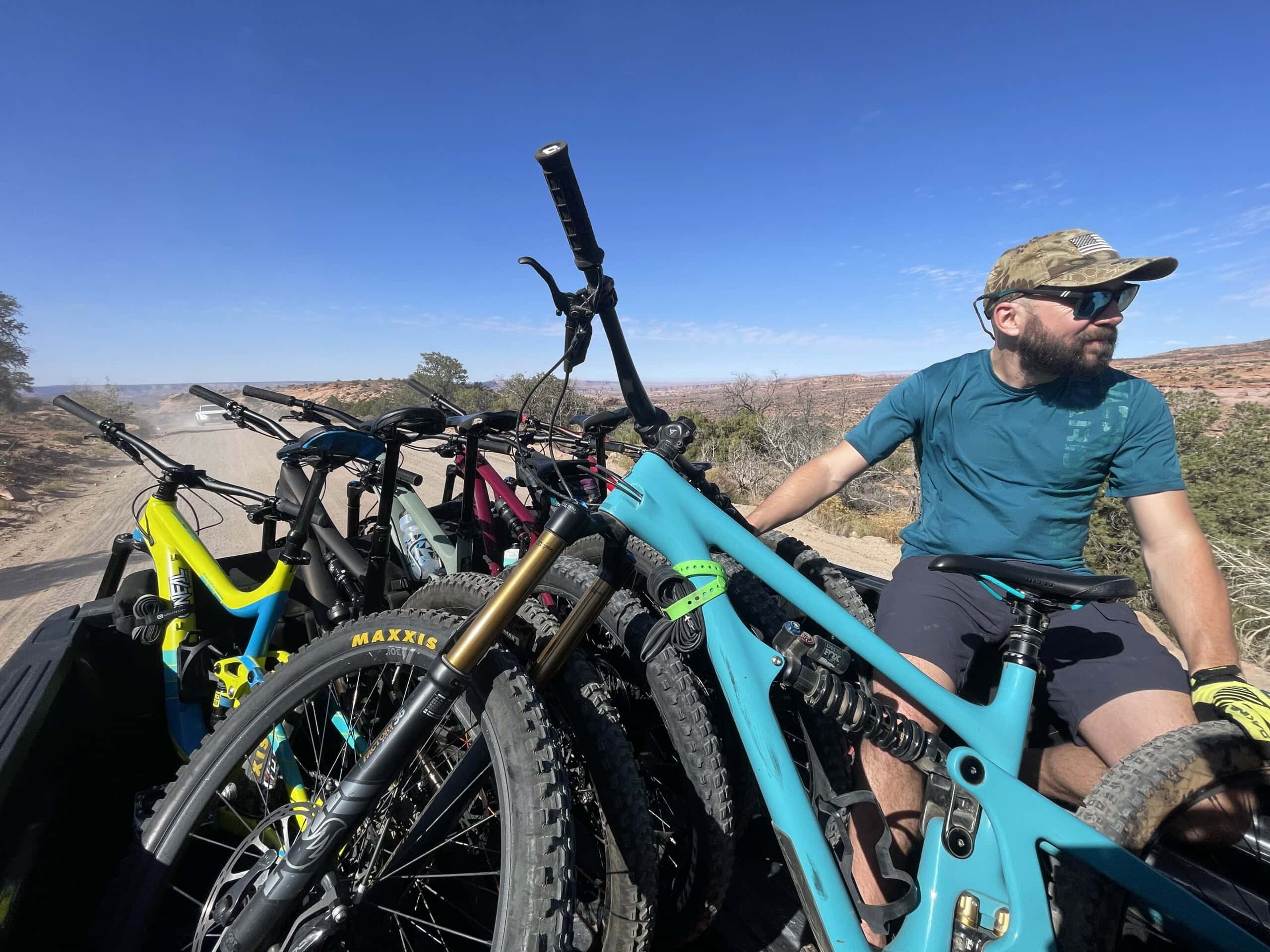
Getting to the Trailhead
The Burro Pass trailhead is an hour’s drive southeast of Moab and there are multiple shuttle companies in town that will take you and your bike to the top for about $40. If weather conditions lead to closures up top, they’ll take you to the highest section they can. They typically offer early morning and late morning shuttle service and they do sell out regularly so be sure to book in advance.
- One-way Shuttle: Park your car in town and jump on a shuttle to the top. At the bottom of the WE, you’ll ride a bike path for 5 miles back to town.
- One-way shuttle with car drop: You can save yourself the 5-mile slog back to town by parking a car at the bottom of the WE (Grandstaff Canyon trailhead) in the morning, driving back into town, and hopping on a shuttle to the top.
- Self-shuttle: If you really want to save some money, you can ask a nice friend to take you to the top or drive up and take a second vehicle up there later to retrieve your car.
- Recommended shuttle companies: Whole Enchilada Shuttles & Coyote Shuttle
What to Pack for The Whole Enchilada
The length of your day will be dependent upon a number of factors, including the size of your group and speed of your riding. If all goes well, you’ll be out on the trail for at least five hours. But, with the mileage you’ll be covering and the technical terrain you’re tackling, you’ll want to plan for potential mechanical issues and other unforeseen circumstances that could extend your day to 7 or 8 hours. To give yourself the best shot at a successful ride, be sure to pack smart:
- Tons of water!
- Carb-heavy lunch (sandwich, wrap, etc.)
- More snacks than you think you need (energy bars, shots blocks, etc)
- Small first aid kit
- Multitool
- Pump and/or C02 cartridges
- Multiple spare tire tubes
- Tubeless plug kit like this one from Dynaplug or this one from Lezyne
- Replacement chain link
- Spare derailleur/hanger (This was suggested to me by a bike shop employee before my last WE ride and after some debate, I politely declined. Of course, I then smashed my derailleur on a rock halfway through the ride and had to limp it across the finish line….so maybe listen to the bike shop!)
Final Thoughts
While the aura that surrounds The Whole Enchilada can make some riders apprehensive to attempt it, I can confirm — it’s a blast. With the right preparation, experienced riders can tackle the beast. Start rallying your crew now but try to keep your travel plans flexible, if possible. It just takes a bit of luck and you’ll have the time of your life.
Find Your Next Adventure
Get epic travel ideas delivered to your inbox with Weekend Wanderer, our newsletter inspiring thousands of readers every week.

